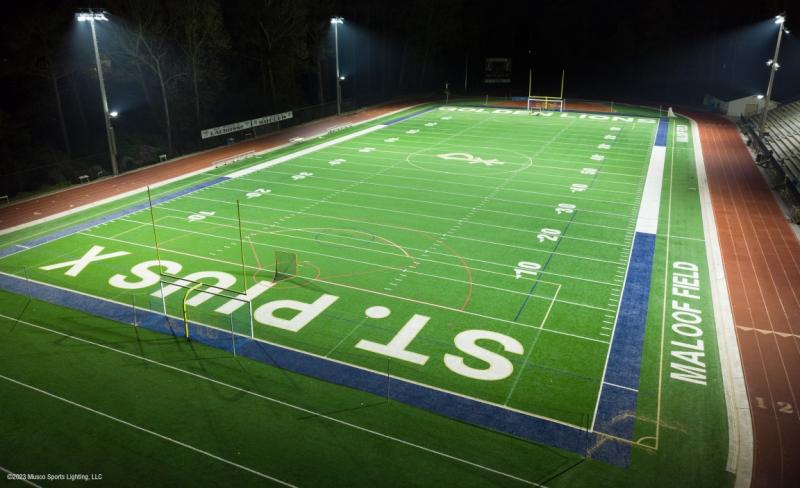
FROM YOUR Musco GEORGIA SALES TEAM
In the past decade, LED lighting has revolutionized sports lighting, providing a cost-effective and energy-saving solution for facilities ranging from high school fields to professional stadiums. It also put advanced special effects and light shows within reach of venues of all shapes and sizes.
But while high-quality LED systems have elevated game nights for high schools right here in Georgia, poorly designed technology from inexperienced manufacturers can cause serious problems with inadequate light levels, excessive spill and glare, and overall reliability. Here are five tips for upgrading to LED lighting technology.
1. Not all sports lighting is created equal.
Every manufacturer’s LED equipment is going to perform differently. This is especially true in a sports lighting situation, where it’s important for a system to be durable and reliable, guarantee light levels, and minimize glare and spill. It takes years of research and experience for manufacturers to get a handle on this.
2. FIND A SOLUTION THAT MINIMIZES SPILL AND GLARE.
Glare and spill light can affect player performance and be distracting for fans. They can also impact neighbors. We’ve seen situations with other manufacturers’ LED technology where facilities are forced to leave their lights off until they resolve issues with spill. Fortunately, there are solutions available that include optics and visoring to keep light on the field where it belongs.
3. LOOK FOR A COMPLETE SYSTEM.
When evaluating potential partners for your lighting project, look for a complete system from a manufacturer that provides lighting, structural, electrical components, and integrated surge protection all built to work together. Many sports lighting manufacturers only sell LED fixtures, and then build out their system with pieces and parts from different suppliers. That can make it difficult to guarantee the performance of the lighting and availability of replacement parts, and to be confident your system will be durable enough to last long after the warranty expires.
4. DON’T SKIP THE DESIGN PHASE
The best way to ensure your LED retrofit delivers the light levels you need—at minimal cost over both the short- and long-term—is with photometric lighting designs in the project’s planning phase. Partners often ask if they can switch their old fixtures out for LED in a one-to-one swap, and while that approach will sometimes meet your project needs, it’s situation dependent.
5. UNDERSTAND YOUR WARRANTY
A: No sports lighting is maintenance-free. It is important to be clear on the length and details of your system's warranty so that you know who is responsible for scheduling, performing, and paying for any necessary service. For comprehensive coverage, look for a combination of proactive system monitoring and a parts-and-labor warranty that is backed by a network of regionally based technicians who can provide timely service.
About The Authors | Learn More
To learn more, contact Musco’s field sales representatives in Georgia: Josiah Smith (josiah.smith@musco.com) and Rob Staples (rob.staples@musco.com)
